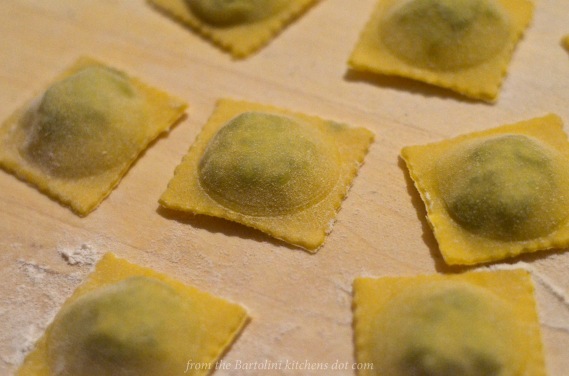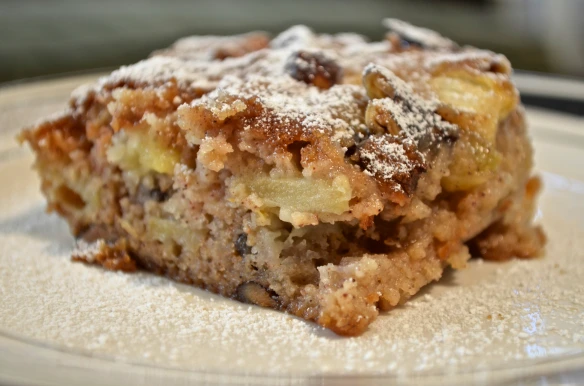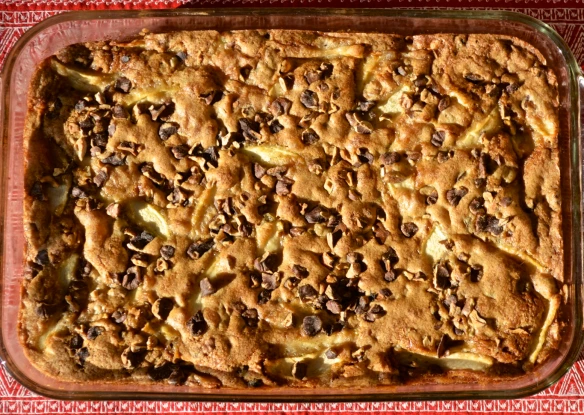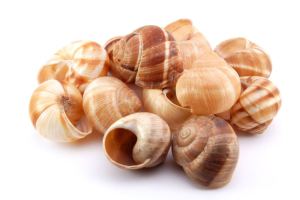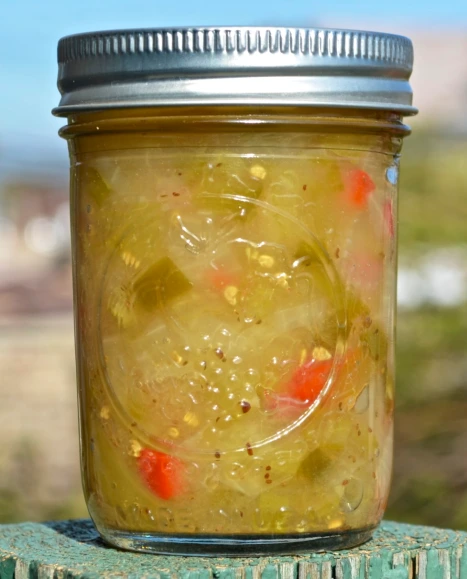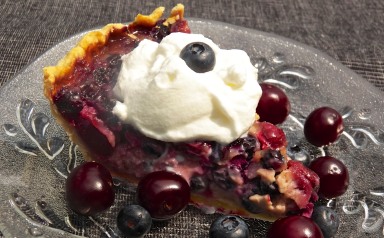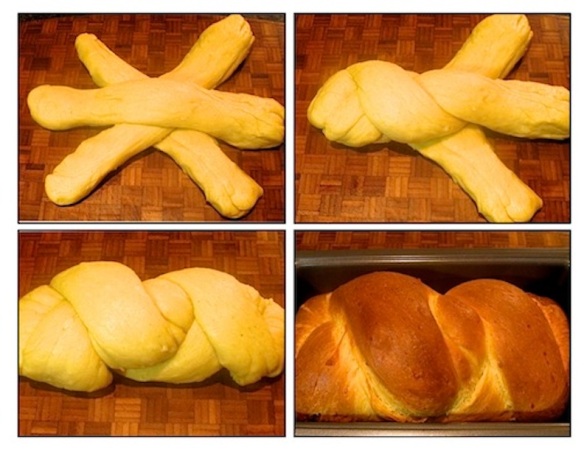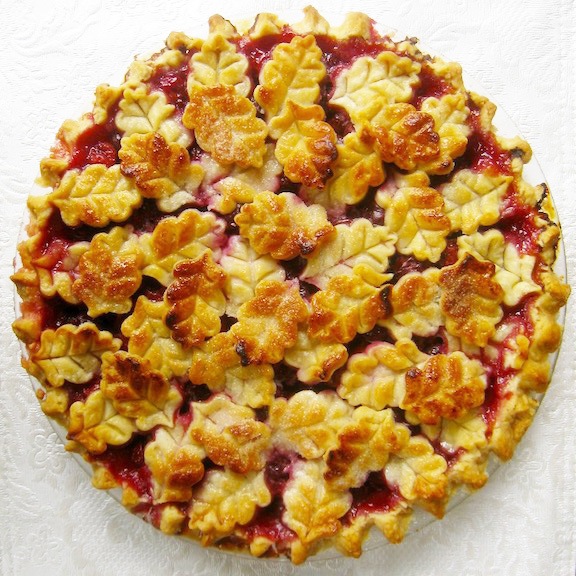Despite today’s post and a few more on the schedule, I am no baker. I do not bake. It is a classic catch-22. I don’t bake because I make mistakes and I make mistakes because I don’t bake. My experience with today’s recipe is a perfect example.
Although I’ve prepared these cookies a number of times, I’ve made more than my fair share of mistakes. Some weren’t so bad, like grabbing dark brown sugar instead of light or forgetting to add the salt. I wasn’t always so lucky, however, like the time I forgot the baking soda. Those little nuggets were tasty but hardly the cookies I had envisioned. Perhaps the worst, though, was the time I forgot to add the flour. Who forgets flour? You wouldn’t but I sure did. You can rest assured, knowing that I’ll never do that again. Even so, there has to be a better way to learn something without nearly ruining 2 baking sheets.
My lack of baking prowess — a.k.a common sense — aside, these are great cookies that freeze well. That’s important for me because if I don’t stash cookies in my basement freezer as soon as they’ve cooled, they’ll be gone within a day. I’ve absolutely no will power when it comes to freshly baked anything. (Yet another reason I so rarely bake.)
This recipe can easily be modified to suit your own kitchen and preferences. I’ve made these cookies using my food processor, as the original recipe directs, but I’ve also prepared them with my stand mixer. I’ve used dried cranberries instead of the cherries, and omitted the white chocolate altogether, doubling the amount of dark chocolate in its place. And if you like almond flavoring, try using almond extract instead of vanilla. In short, feel free to make whatever substitutions you like, just don’t forget the flour!
* * *
Announcing …
It’s time once again for the Honey Man to open shop in Michigan’s Thumb. This means I’ll be closing the Kitchens so that I can make the yearly honey run. Normally, I’d reopen the Kitchens in 2 weeks but not this year. You see, honey won’t be the only precious cargo that I’ll be bringing back to Chicago. I’m very happy to say that I’ll be playing host to a most special Guest and the Kitchens will be closed for the entire visit, known affectionately in these parts as “The Visitation.” Rest assured, the Kitchens will reopen once I’ve returned my Guest to her Michigan home.
* * *
Oatmeal Cookies with Two Chocolates and Dried Cherries Recipe
Ingredients
- 1/2 cup unsalted butter at room temperature
- 1/2 cup light brown sugar, packed
- 1/4 cup sugar
- 1/2 tsp vanilla extract
- 1 large egg
- 1/2 tsp baking soda
- 1/2 tsp salt
- 3/4 cup AP flour
- 1 cup old-fashioned oats
- 2/3 cup dried cherries
- 1/3 cup semi-sweet chocolate chips
- 1/3 cup white chocolate chips
- 1/4 cup slivered almonds, toasted
Directions
- Pre-heat oven to 375˚ F (190˚ C). Place 2 oven racks on the top and bottom thirds of the oven.
- Cream together the butter, 2 sugars, and vanilla in a food processor
- To the processor bowl, add the egg, baking soda, and salt. Process until combined.
- Add the flour and again process till combined.
- Add the oats and pulse a few times. The object is to mix without pulverizing the oats. Empty the contents of the processor bowl into a large mixing bowl.
- Add the almonds, cherries, and both chocolates to the mixing bowl and use a spoon to mix the contents.
- Use a large ice cream scoop or tablespoon to create evenly sized cookies. Place scoops of dough on 2 large, parchment-covered baking sheets, about 2 inches apart.
- Bake for 6 minutes before turning and switching racks. Bake for another 6 or 7 minutes. Cookies should be lightly browned.
- Remove from oven and place cookies on a rack to cool.
- Store in an airtight container.
Adapted from a recipe on Epicurious
* * *
Notes
Like the fried chicken of 2 weeks ago, these cookies are good for long car rides. Very good.
* * *
The Colosseum and Forum of Rome
Just down the street from our flat was the Colosseum, one of the World’s few arena’s older than Wrigley Field. It is usually one of the first and last sights I see when I’m in Rome. As I’ve told my friends — ad nauseam, I’m sure — I’m a tactile person and only when I touch the Colosseum do I truly feel that I am in Rome.
(Click to enlarge any/all photos)
* * *
* * *
Right outside of the stadium lie the ruins of Ludus Magnus, the best of the gladiator schools. Tunnels once connected it to the “basement” of the Colosseum, which housed everything from wild animals and gladiators to their unfortunate victims. The amphitheater itself is huge with seating estimates that surpass 45,000 people. Yet, it could be vacated in as few as 5 minutes in an emergency. Located around the arena are thick cement posts, of a sort. These were used to support a retractable roof that provided shade from the hot Roman sun, while the arena floor could be flooded to permit mock naval battles to be performed. When not flooded, the stadium floor featured numerous trap doors, allowing for the “introduction” of fierce animals into the arena. Like so much of Rome, history comes alive as you walk around the Colosseum.
* * *
The heart of the ancient city, the Forum, was where Romans came to conduct business, shop, talk politics, and worship. On one side lay the Colosseum, easily the largest amphitheater of its time. On another, atop Palatine Hill, is where the emperors lived, as well as the Republic’s wealthiest citizens. Being slightly elevated, it was believed to be a bit cooler than the surrounding area and it gave the inhabitants the opportunity to literally look down upon the masses milling about the Forum. Following the main path through the Forum, the Via Sacra, you’ll pass the ruins of numerous temples, basilicas, and the Curia, where the Roman Senate met and where Julius Cæsar was assassinated. Speaking of which, you’ll also come across the altar used for Cæsar’s cremation. (The first time I visited the Forum was on March 17th quite a few years ago and red roses were strewn about the altar.)
* * *
* * *
If you are at all interested in the Roman Empire and find yourself in Rome, you really must see the Colosseum and Forum. Words and photos cannot describe the sensation of walking along the Via Sacra, tracing the steps of people like Julius Cæsar, Tiberius, Augustus, and every Emperor that was to follow them, not to mention countless notables of the ancient civilization. It was, for me, the perfect way to end my holiday and this series.
* * *
It’s déjà vu all over again …
 Today’s blast form the past isn’t at all a seasonal dish, at its core, but you could make it one, if you wanted. Aglio e Olio is so simple to prepare that it is a “late home from work” dish; a “we spent the night out with friends and need something quick to eat” dish; and/or a “my cupboard is bare and I’m hungry” dish. Aglio e Oilo can be all these things and so much more. You can learn all about it by clicking HERE.
Today’s blast form the past isn’t at all a seasonal dish, at its core, but you could make it one, if you wanted. Aglio e Olio is so simple to prepare that it is a “late home from work” dish; a “we spent the night out with friends and need something quick to eat” dish; and/or a “my cupboard is bare and I’m hungry” dish. Aglio e Oilo can be all these things and so much more. You can learn all about it by clicking HERE.
* * *
Coming soon to a monitor near you …
* * *



















